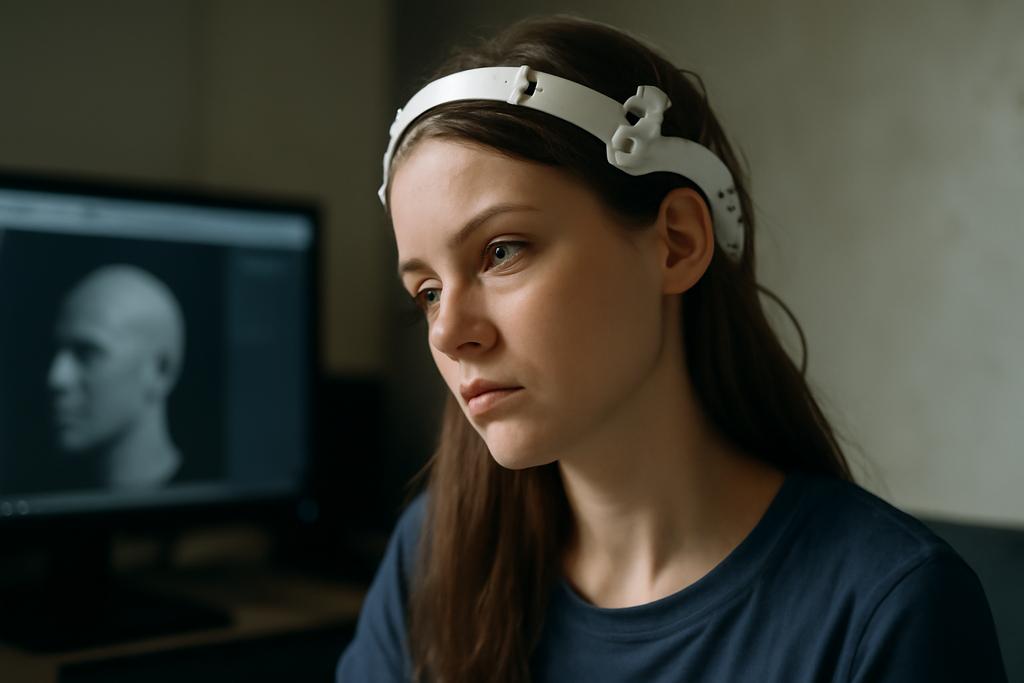Imagine a world where computers understand not just what you’re saying, but how you’re saying it — the subtle shifts in your gaze, the barely perceptible tilt of your head. This isn’t science fiction; it’s the promise of advanced head pose estimation (HPE), a field that’s quietly revolutionizing how computers interact with the human world. Recently, researchers at the Universitat Pompeu Fabra in Spain developed a new deep-learning approach that dramatically improves the accuracy and speed of head pose estimation, even when training data is scarce. Led by Mahdi Ghafourian and Federico M. Sukno, this work offers a glimpse into the future of intuitive human-computer interaction.
The Challenge of Capturing Subtle Movements
Accurately estimating head pose is trickier than it sounds. Think about the nuances of human communication: a slight nod, a quick glance, a tilted head — these micro-movements convey volumes of information, yet are incredibly complex to capture digitally. Traditional methods relied on classifying head positions into discrete categories (e.g., left, right, up, down), an approach that lacked the precision needed to capture the fluidity of human expression. The existing datasets, often plagued by inaccurate annotations, only compounded this difficulty.
The researchers addressed this limitation head-on. Instead of relying on noisy, pre-existing datasets, they generated their own. By rotating 3D models of human heads and rendering the resulting 2D images, they created a “pose-consistent” dataset – a perfectly annotated collection of images representing all possible head orientations within a specific range. This approach provided a gold standard for training their new algorithm, unlike previous work that had to make do with imperfect data.
A Novel Approach: Manifold Learning and Tensor Decomposition
The core of their innovation lies in a technique called non-linear manifold learning. Imagine a crumpled piece of paper. While it’s a two-dimensional surface, it’s not a flat plane. The actual shape of the paper defines a “manifold.” The researchers’ insight was to realize that the possible head poses also form a manifold — a continuous, three-dimensional space defined by the three angles that determine the head’s orientation: yaw (left-right), pitch (up-down), and roll (tilting).
To capture this manifold, they employed a powerful mathematical technique called tensor decomposition (specifically, Tucker decomposition). Think of a tensor as a higher-dimensional generalization of a matrix. By decomposing the tensor representation of their dataset, the researchers effectively separated the head pose variations along each of the three axes. This separation allowed them to model the pose manifold with astonishing precision. The resulting structure can be approximated by sinusoidal functions; this elegant mathematical model neatly encapsulates how the head rotates along each axis. This step is critical to their speed and accuracy.
From Theory to Real-Time Application
The brilliance of this work lies not just in theoretical elegance but in practical application. While tensor decomposition provides a powerful way to understand the structure of the pose manifold, it’s computationally expensive. To make it usable in real-time applications, the researchers added an extra layer of genius. They developed a deep learning model — a combination of an encoder and three Multi-Layer Perceptrons (MLPs) — that learns to predict head pose angles directly from the extracted facial landmarks, making the process instantaneous. The encoder learns a low-dimensional representation of the facial landmarks, a “latent space,” which captures the essence of the head pose, and the MLPs translate this low-dimensional encoding directly to predicted head angles.
This two-pronged approach — rigorous mathematical modeling combined with efficient deep learning — is what sets their method apart. Their algorithm achieved state-of-the-art accuracy while being significantly faster than other existing systems, as demonstrated by their testing on the AFLW2000 and BIWI datasets, two common benchmarks in the field. The speed of their method also surpasses other state-of-the-art systems, as showcased in their experiments. This opens a whole new range of possibilities for applications requiring real-time analysis of head pose.
Implications and Future Directions
The implications of this work extend far beyond simple head tracking. Imagine a future where driverless cars can instantly gauge a driver’s attentiveness, where virtual reality experiences adapt to the user’s head movements, or where robotic assistants are able to seamlessly anticipate user intentions based on even the slightest facial cues. This research lays a robust foundation for such advancements. The technique offers superior performance in diverse real-world scenarios, especially those involving unseen or uncommon data patterns — a feature that many existing systems lack.
The researchers acknowledge that their model currently has limitations in handling extreme head rotations, due to constraints imposed by their facial landmark extractor. But this is an area for future research. As facial landmark detection improves, so too will the ability of the algorithm to analyze a wider range of head orientations. In the future, they plan to explore more sophisticated feature extractors (such as transformers) that can handle the challenges of extreme head poses and explore the possibility of generating even more data, paving the way for even more robust and precise head pose estimation.
The work by Ghafourian and Sukno at the Universitat Pompeu Fabra isn’t just a technical achievement; it’s a testament to the power of combining advanced mathematical techniques with the agility of deep learning. It represents a significant step towards a future where technology can seamlessly interpret and respond to the full spectrum of human expression, making the digital world as intuitive and responsive as human interaction itself.










